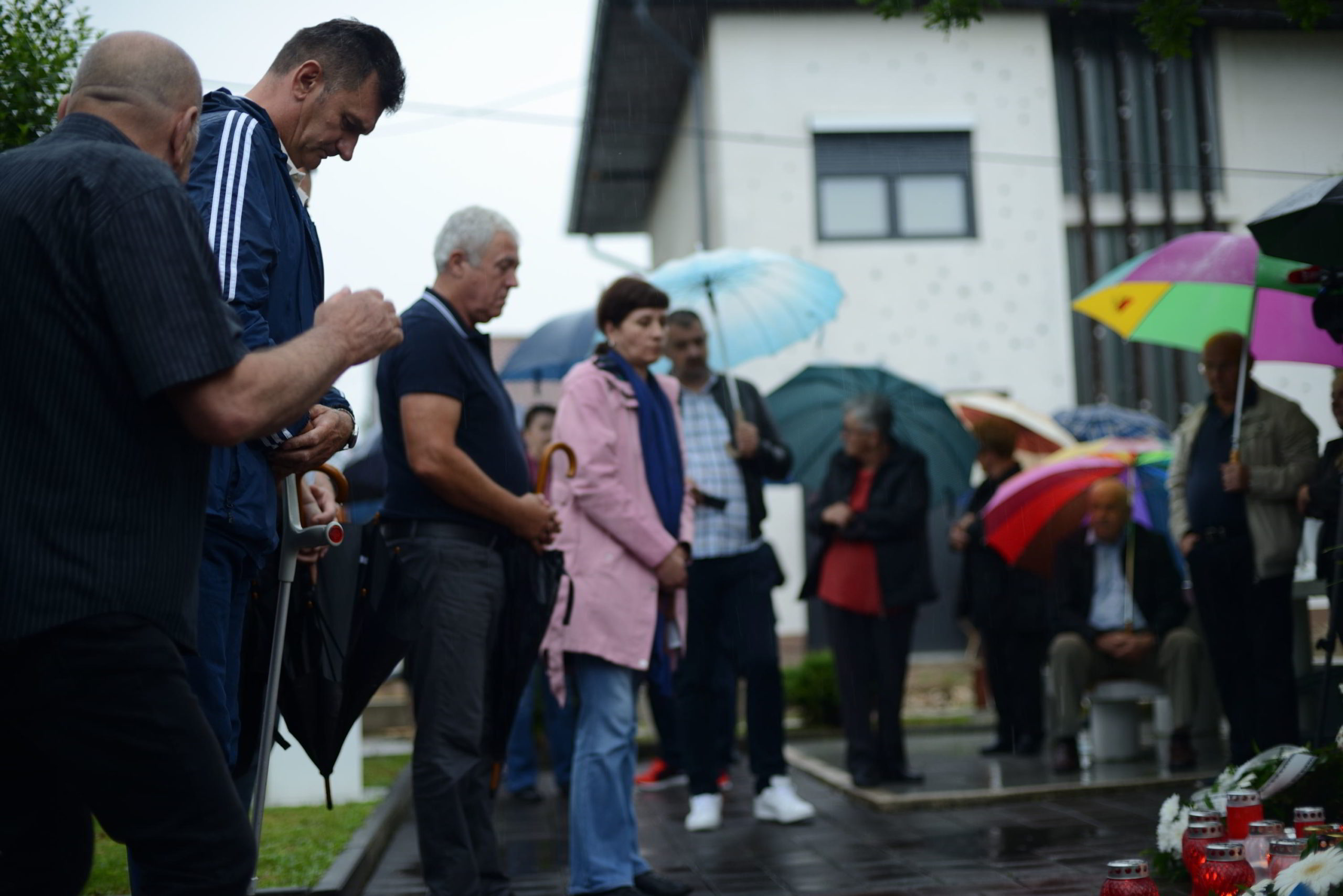It has been 29 years, yet no one has been held responsible for the deaths of eight children in Vitez, killed on 10 June 1993 by a shell fired from the positions of ARBiH. A mixed group of war veterans and peace activists from BiH, Croatia and Serbia visited Vitez today to pay their respects to the child victims.
The youngest victim was nine-year-old Augustina Grebenar whose twelve-year-old brother Velimir was also killed. The victims also included Milan (12) and Sanja Garić (18), another pair of siblings, as well as fifteen-year-old Dragan Ramljak, Draženko Čečura and Sanja Križanović, and ten-year-old Boris Antičević. Five children were killed instantly, three died in hospital, and six were wounded.
Every year on the 10th of June, families, friends and neighbours gather at the playground where the children were killed, and which now features a bench, a basketball hoop and the “Osmica” memorial. They come with flowers, to light candles and remember their loved ones in prayer. As in the previous years, the service was led by Fra Velimir Bavrka who comforted the families of the victims and spoke about the need to forgive, to ensure coexistence and reconciliation.
This year, the families of the killed children organising the commemoration invited war veterans and peace activists from the region to attend. Veterans of the Army of the Republic of Bosnia and Herzegovina (ARBiH), the Croatian Defence Council (HVO), the Croatian Army (HV), the Army of Republika Srpska (VRS), and the Army of Yugoslavia (VJ), together with a group of peace activists from the Centre for Nonviolent Action Sarajevo-Belgrade laid a wreath and paid their respects to the killed children.
“For us, this is the third year running that we have come to pay our respects to the children killed in Vitez. In the previous two years, we came with a smaller group of colleagues, friends and associates, but this year we have come with a larger group that also includes war veterans. As in so many other places, it is always painful when we come together to commemorate victims, and all the more so when they are children. We know that the families are seeking justice, and we support them in their endeavours to finally determine all the circumstances and possibly the names of those responsible. We may not be powerful, but we are here today, as we have been in previous years, as we go to various places, to express our condolences to the families, to support them on this sad day, to send a message to our society that together, we can remember all victims, that we can learn from the painful past and together build a better future for ourselves and for the coming generations,” said Davorka Turk, member of the Centre for Nonviolent Action.
The families of the killed children have been organising the commemoration without the official presence or support of politicians or representatives of associations related to the past war, because, as they say, they will not stand for any manipulation or politicising of the victims. All people of good will are welcome, of course, to join the families, friends and neighbours in prayer and remember the innocents who were killed.
“As peace activists and war veterans from different sides, we have come to give direct support to the families of the victims. I think the idea to work closely with families of victims is the best path not just for peace work and dealing with the past, but also more broadly, to heal society. This cooperation is needed to help heal the culture of memory in BiH,” said Adnan Hasanbegović, a peace activist and veteran of ARBiH.
Under the organisation of the Centre for Nonviolent Action, peace activists and war veterans from the region have attended commemorations in BiH in Gornji Vakuf, at Site 715 near Zavidovići, in Stog near Vozuća, in Novi Grad/Bosanski Novi, Sanski Most (Hrastova glavica), Sijekovac near Brod, Laništa near Brčko, Trusina near Konjic, Ahmići near Vitez, Grabovica, Uborak and Sutina near Mostar, Briševo and Zecovi near Prijedor, Korićanske stijene, Stupni Do near Vareš, Boderište near Brčko, the bridge over the Sava in Brčko, Bradina near Konjic, Skelani near Srebrenica, the Silo in Tarčin near Hadžići, and in Serbia in Grdelička klisura near Leskovac, Varvarin near Kruševac, Aleksinac, as well as in Croatia in Pakrac, Varivode and Gošić near Knin.
“This is one of the more difficult commemorations we have attended. Emotions are overwhelming. Eight children were killed by a shell fired in the evening. We are here, veterans of all armies from BiH, Serbia and Croatia, to pay our respects to these children who were killed in their playground, on their doorsteps. It is very difficult to be here, but we have to find the strength to break the vicious circle and show that we can be humane and live next to each other, among each other, with each other, because there is no other way. To show that it is high time we take this new path and live in peace,” said Mirko Zečević Tadić, an HVO veteran from Brčko.
The photo gallery is available HERE.

